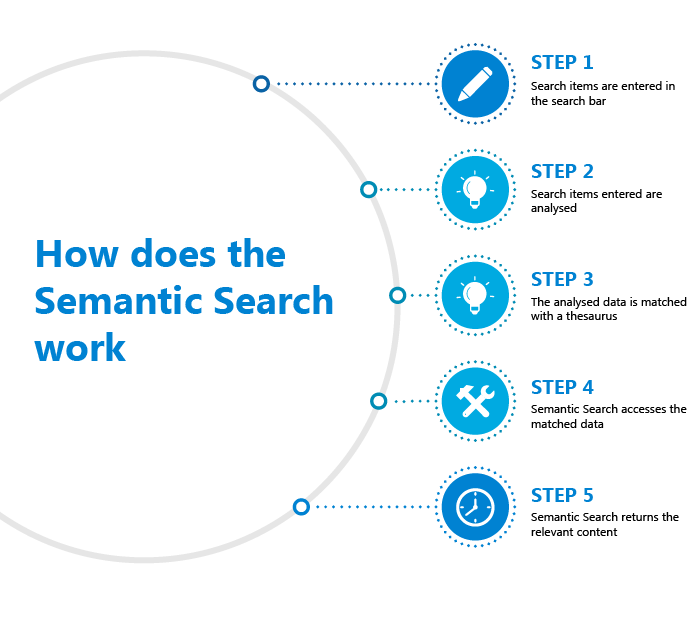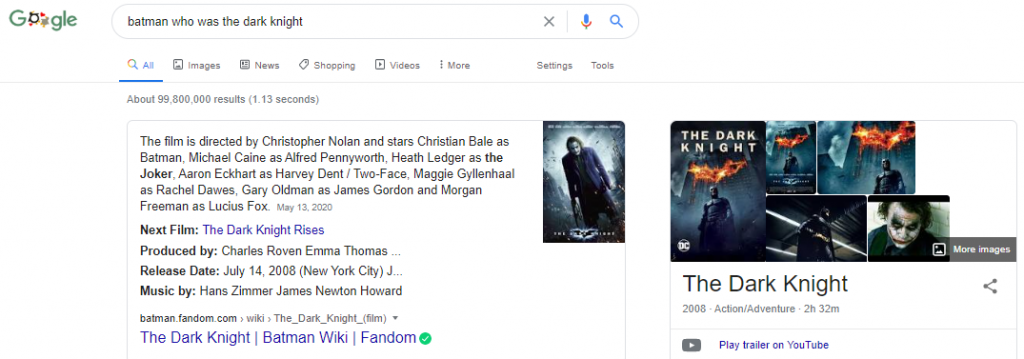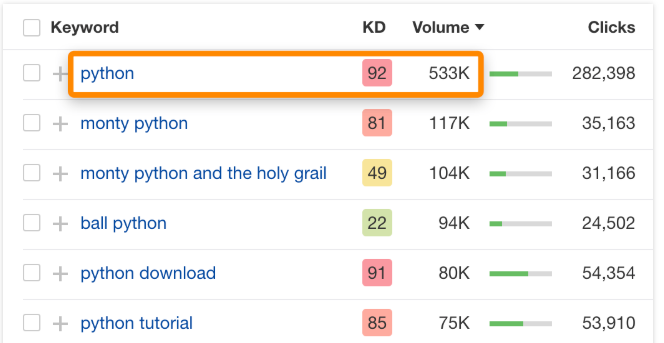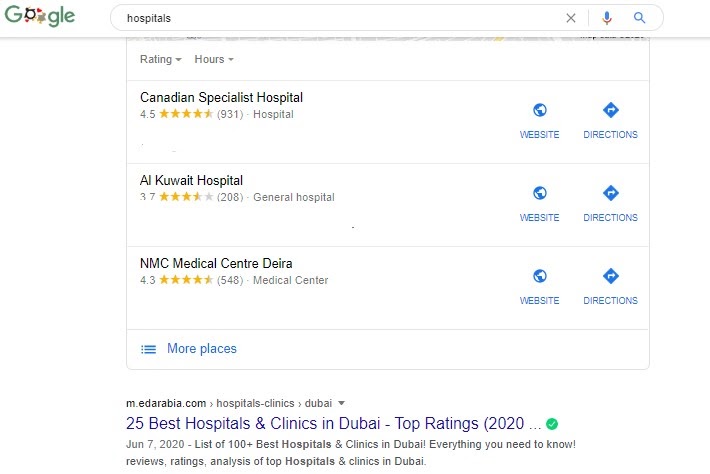Semantic Search – A Detailed Overview
June 27, 2020
Article Overview
10min read
Semantics, a branch of linguistics and logic not only studies the perceptive structure but also the logical aspects of the meaning of words and their relationships. Since this concept helps improve the accuracy of understanding the contextual meaning of terms, it comes as no surprise that search engines, like Google, use it.
You may have noticed that Google can provide answers for almost any question that you would search on, even if it would not make perfect or any grammatical sense. Take a look at this query:

Despite us novice Potterheads not mentioning the term Horcrux, Google could provide search results about it with just a few related terms. Using semantic search will help search engines provide more relevant results with an improved and a higher accuracy rate.
In this article, we provide an insight into semantic search and how it could impact SEO as a whole. Read on to know more.
SEO specialists may sometimes spend their efforts to try and let Google rank their websites higher on SERPs and check the quality of their content, the creativeness of their meta elements, and their organic marketing and advertising strategies. However, when creating and designing a website and its elements, SEO specialists often ignore the big picture—Google’s algorithm.
Google makes thousands of changes to its algorithms every year. These algorithms are complex systems that can help retrieve data from a search index and instantly deliver relevant results for a query. Through this, search engines use a combination of a number of ranking signals to deliver web pages based on relevance on its search engine results pages (SERPs). Semantic search is one important part of Google’s search algorithm.
What is semantic search?

As mentioned above, the term Semantic, when applied to the process of searching, basically refers to understanding the contextual meaning of words and their logic. Semantic search aims to improve the accuracy by knowing a searcher’s original intent. This type of search focuses on the meaning of search queries instead of matching traditional keywords. It is also considered as a process for retrieving information that can help return precise and relevant results.
By matching concepts, natural language algorithms, and synonyms, semantic searches can provide more interactive and relevant searches by changing structured and unstructured data into a responsive database.
Semantic searches help companies acquire an enhanced understanding of a searcher’s intent, the ability to provide answers and deliver personalized results as the user requests. Google’s Knowledge Graph is a pattern of how effective semantic search is.

How does semantic search work?
Many of the early efforts made by semantic-based search engines were highly dependent on techniques such as natural language processing to understand the query put forth.
A prime feature of semantic web search is the ability to understand the content included on the search engine results pages (SERPs). Semantic searches are all about accuracy. It helps focus on the context of a user’s query, it’s intent, the location, and the variations to provide relevant search results. Using semantic search, search engines are able to determine what a user needs to search and then return results that do not necessarily match the words a user has typed in the search bar.
However, performance problems were noticed in many search engines that were based on semantic networks. This was mainly due to the scale of the extensive semantic network. For semantic web searches to return the right results, a great deal of relevant information must be embedded in the code itself. But, at the same time, such an extensive network could create difficulties in processing the possible paths to a suitable solution for the queries users present.
Although many of the search giants already feature semantic search, they impact a website’s SEO process as well. In the following sections, we aim to provide an insight into how this could affect the way you post content on and the way you design your website.
How does semantic search appear on Google results?
Semantic SEO helps search engine optimization experts to stay ahead of the competition and acquire additional points in securing additional factors to rank their websites higher on search engine results pages (SERPs). Although this concept is generally misunderstood, applying a semantic SEO strategy for your website and even your clients can be quite beneficial—for example, it can improve your website page’s performance and improve your site’s traffic for queries containing alternate or incomplete words.
A common example can be seen in the image below.

In the above picture, the query entered in the search bar merely states Online Offers and the results returned on the first page of Google show websites offering discounts on items from various categories ranging from groceries and baby care to home appliances and electronics. With alternate words, semantic searches can help understand that you are looking for the best offers available on various products. This also helps the websites ranking on Page 1 acquire traffic from such search queries because they, although unknowingly, use a better alternative word on their websites.
Traditionally, the semantic indexing of content comprises factors from the application of LSI (Latent Semantic Indexing). This makes use of a thesaurus or ontology (a set of concepts or categories of a domain or subject area that demonstrates their properties and the relations between them). These contain specific alternative meanings for the target keyword. It is important to note that Google applied semantics (for example, alternate word and phrase meanings as well as synonyms) in a distinctive way to its search results. Google stores trillions of data pieces on user searches, so it knows better than a thesaurus and provides accurate results by scouring through alternate meanings in the real world of online search.
Google technologies that play a role in how semantic search works

Google constantly releases updates for its algorithm in order to improve its capabilities as a search engine to understand a user’s natural language patterns and search intents. There are four technological updates that have helped make semantic search what it is in 2020. These have been described in brief as follows:
- Knowledge Graph: Google’s Knowledge Graph, released in 2012, is an intelligent model or graph that understands real-world entities and the relationships between one another. A Knowledge Graph could look something like the above image but with over 5 billion entities. This technology helped enable the shift from keyword to semantic matching. A structured data and entity extraction from the original text are two of the main methods of adding information and updating the Knowledge Graph. However, in the case of the latter, the search engine requires understanding a user’s natural language pattern. This is where the following algorithmic updates come into effect.
- Hummingbird: In 2013, Google released a search algorithm update known as Hummingbird. This update was beneficial especially for complex search queries as it helped return better search results. This was one of the first massive updates that focused on the meaning and intention of search queries over individual keywords. The Hummingbird update also helped companies and content agencies develop content about specific topics and not just keywords.
- RankBrain: Latent Semantic Indexing or LSI is a system that helps search engines analyze the words people use surrounding a specific topic. Such keywords are highly correlated to a user’s search query and this helps search engines provide relevant results. However, with the introduction of the RankBrain update, Google was able to solve the original problem—regarding a mismatch between the language used in search queries and the desired content—for which LSI was created as a solution.
Google’s RankBrain comprises technologies that are more enhanced than those of LSI. In layman’s terms, RankBrain understands the meanings of unfamiliar terms and phrases through the use of advanced machine learning algorithms. This algorithm has proven to be of great assistance as around 15% of all search queries have never been done before.
Owing to its changes and the way it impacts semantic searches, RankBrain can be considered as an upgrade to Hummingbird. This is one of the strongest and accurate ranking signals available; however, companies can proactively optimize for RankBrain by only satisfying search intent of users.
- BERT: The Bidirectional Encoder Representations from Transformers (BERT) is the latest artificial intelligence upgrade to how semantic search functions. It impacts at least 1 in 10 of all (trillions) search queries. The BERT upgrade to Google’s algorithm improves the way how long and complex sentences and/or queries are understood. It effectively deals with ambiguity as it aims to understand the contextual meaning of searches in a better way. Although it helps companies create content on a variety of topics, there is nothing yet that they can do to optimize their websites for BERT.
These are the main upgrades that shape the way how semantic searches work.
Why is semantic search important for businesses?

The principles of semantic search, its needs, and how it is influenced are, thankfully, easy to understand. The following pointers help users and website creators know how to optimize their websites for semantic searches.
Users do not always use the same language as the desired content: A majority of users, even us, may not always type in a search query correctly. This could happen because we may be looking for results such as an unfamiliar song or movie, a significant other of an actor, or about historical phenomena.
For example, let’s say you heard an unfamiliar song in an advertisement for a phone and would want to know what it is. You will probably Google random lyrics or terms such as XYZ Phone Advertisement Song or Song Appearing in XYZ Phone Ad 2020 till you find it.

Moreover, if you compare the way you enter search queries on the Internet to what you say to virtual assistants such as Siri, Alexa, Bixby, or the Google Assistant, the way we search for queries take on a conversational tone.
There are so many ways through which we, as users, express an idea or perform our searches. Therefore, search engines need to deal with all of them and be able to match the content in their index with a search query based on various terms to provide faster and effective results.
Understanding lexical hierarchy and entity relationships between entities: An example, such as the following, can help show just how impressive Google’s semantic search is.

To find the name of the actor, the terms closest and most familiar were typed in the search bar. Google had to instantly pull up results for The Dark Knight trilogy and make connections that the actor Christian Bale played the role of Batman. In this case, the lexical hierarchy shows the relationship between terms. Moreover, entities refer to characters from movies or series (Batman/The Dark Knight) or people with a specific job such as actors (Christian Bale).
As mentioned earlier, not all queries match the exact words of the desired content. For example, if you look for affordable homes, a semantic search would provide results for terms such as cheap or reasonably priced housing facilities.
Many queries are unintentionally ambiguous: Around 40% of English words are polysemous (these words have either two or more meanings), and this is one of the important factors that semantic search is trying to solve.
According to Ahrefs Keyword Explorer, there have been over 500,000 monthly searches for the keyword python. Now, in this case, tech enthusiasts would Google for Python as the programming language; however, anyone outside the tech industry would likely expect results for the actual snake or the legendary British comedy troupe, Monty Python.

The problem here is that words would rarely have a clear meaning without any context being mentioned. Besides polysemous words, there are multiple nouns that could act as adjectives, verbs, or even both. When it comes to semantics, context is quite essential.
Semantic searches reflect personal interests and trends: Considering the example noted from Ahrefs’ Keyword Explorer in the section above, a person who is a tech enthusiast would get hits about Python for the programming language. Such results are shown based on our personal interests and previous searches.
Although we are not always comfortable with how our personal data is used, it can be of great use to search engines. Google uses a consumer’s search history to deliver accurate and personalized search results. We may have noticed this. For example, when we search for a generalized service, such as hospitals, we find personalized results for the same.

These are some of the factors that can help businesses efficiently optimize their website for semantic searches on search engines. Moreover, understanding the way in which semantic search functions is essential as it helps increase the amount of traffic and conversions to your website.
When a company provides a seamless digital experience for its users, it helps acquire their trust towards the brand. Moreover, considering the efficiency of your website, they would be persuaded to become returning customers. Another way that can aid in acquiring the trust of your client and target audience is to make your website attractive, implement smart searches, release detailed catalogues, and so on. Including LSI keywords and content that could be optimized for Google’s algorithms can not only help index your website higher up on search engine results pages but also enhance your conversion rates.
How to adapt your website for search engines

Semantic searches add a human element to search engines and basically impacts the way queries are indexed. This would mean companies would need to focus on creating content that is relevant to a keyword’s topic rather than just the keyword; this will help in matching a user’s search intent. When creating content, creators should answer questions asked by their target audience, providing detailed insights and instructions, and targeted and helpful landing pages.
In this rapidly changing world, companies must stay ahead of their competitions and keep up with the trends. The following pointers aim to assist companies to adapt their websites for semantic searches.
Creating content on topics: As mentioned in the above paragraphs, it is important to create content based on target topics and not just the keywords. Previously, however, your website could have ranked high up on SERPs with separate articles about the same topic but targeting keywords differently; for example, you could write articles on topics such as best salons UAE, best hair salons, best affordable salon deals, the salon offers Dubai, popular salon deals UAE. However, this is no longer the case. With the frequent updates to Google’s search algorithm, it is able to rank all similar articles under a common search term.
Therefore, when creating content, you must ensure to cover a topic in detail so that your article gets ranked for various keywords within them. Using a main and several associate keywords will assist in your page ranking for each of them. This will, in turn, enhance organic traffic to your website. However, content creators should ensure that the article does not carry on for pages on end and makes a reader lose interest. This might end up in your website losing followers or traffic.
Understanding and analyzing search intent: It is not forbidden to publish content about a certain topic that does not match a user’s search intent. For example, if your company, which is a start-up, provides digital marketing services and has an opportunity to target the keyword, Marketing Campaigns. As a start-up, you may consider publishing an article related to Creating Marketing Campaigns Through E-mail. Although users searching for this topic may not be familiar with marketing techniques, this article would not always reflect a user’s search intent. Therefore, before you start creating content, using social media marketing and analyzing tools and understanding will help acquire topics that can optimize your website for semantic search and SEO.
Using semantic HTML designs: Semantic HTML, like the concept itself, helps machines to recognize headers, footers, tables, navigational blocks, or videos by adding meaning to the codes. HTML5 includes the most number of semantic elements; these are seen in modern CMS themes. If your company’s website does not have these features, you can usually find a plugin to add them.
However, the application of semantic HTML is quite limited as it does not convey the meaning of the actual content.
Using schema markup: Schema markup, or structured data, is another effective way of marking up your articles or pages. Schema.org contains many types of vocabulary that can be used to markup your content in a way that would enable Google to rank it appropriately.
For example, Google will easily be able to extract meaning from structured content such as:
Movie run time: 125 minutes
IMDB Ratings: 4.2 stars
Rather than through natural language such as This movie has a run time of around 125 minutes and has an IMDB rating of 4.2 stars. Critics and fans alike have recommended this as a must-watch!
If a user wants to know if this movie is worth their time, Google will be able to provide accurate information in the best way.
Providing relevant results through links: Links were one of the first indicators of relevant information. Internal and external links can show reliability. This can also help Google understand what your content may be about even before it could get processed. However, when adding links, you should ensure to add reliable ones as this will help readers know that you provide informative and accurate content and would encourage better traffic to your website.
Semantics all the way

The application of semantics to search engines has impacted the way they function. Semantic searches have basically changed the way content is being created and published. By following effective optimization techniques, you can provide valuable and high-quality content. This will encourage more visitors to your website.
As the principles of semantic search are easy to understand, you can make the changes necessary for your website and make it and the articles on it SEO-friendly. This would, in turn, result in organized websites that would make for a user-friendly experience. You can try these techniques or avail the services of a reliable SEO agency to guide you.


 +971 52 312 2506
+971 52 312 2506




